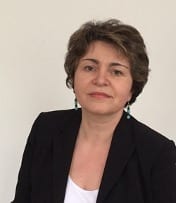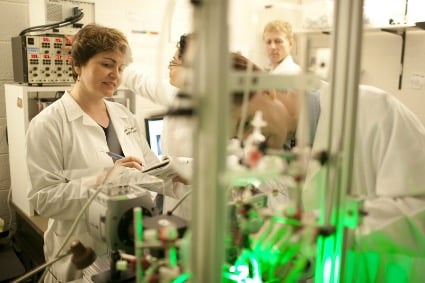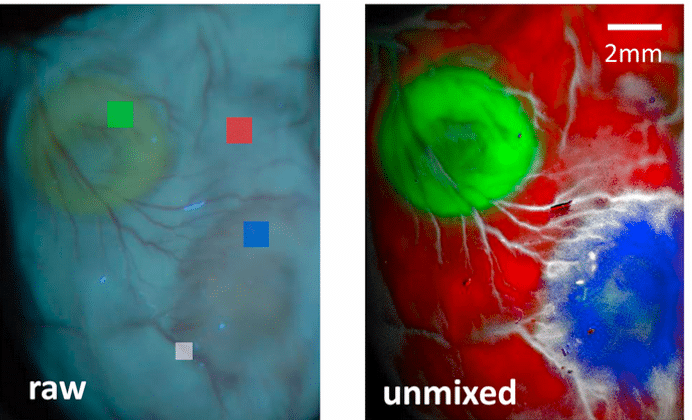Enhancing Global Access: interview with CZI grantee Narine Sarvazyan
Posted by Mariana De Niz, on 24 January 2024

BUILDING A BIOMEDICAL IMAGING NETWORK FOR FORMER SOVIET COUNTRIES
Narine Sarvazyan, PhD holds multiple affiliations. She is a Senior Researcher at the Orbeli Institute of Physiology, and a Professor at the George Washington University and at the American University of Armenia. She serves as a main PI on the CZI project to create a regional network of bioimaging researchers from six former Soviet states. The activities include the exchange of experience, access to equipment, bioimaging training and outreach activities to engage the young generations in science and research. The overall goal of the project is to advance collaboration through the optimization of bioimaging resources and increasing access to them in the region.
What was the inspiration for your project? How did your idea for the CZI project arise?
My family roots are from Armenia, and so I have been coming to Armenia occasionally to see my relatives and to collaborate with my colleagues at the Orbeli Institute of Physiology. When the CZI opportunity came about, I realized that my colleagues at the institute had collaborators in Georgia, Russia, Ukraine, and other parts of the former Soviet Union, so it was a natural fit to create a community based on that. In my lab at George Washington University, we do a lot of imaging using confocal and hyperspectral approaches. Thus, the importance of using advanced bioimaging techniques was very clear to me and I saw how far behind a lot of labs in the former Soviet states are in terms of such equipment. Of course, getting additional funding or equipment will not immediately increase research productivity. First, people need to become aware of what these methods can do, then they need to formulate their research questions, spend time answering them, and only then publish. We all wish for this process to occur faster, but it’s like planting seeds. One has to provide time, nutrients, and water for them to grow. Soon after we received CZI funding, the war between Ukraine and Russia started. This made it extremely difficult to engage researchers from our two largest network members. So, while hoping that work and travel to affected states will eventually resume, we decided to concentrate our efforts more locally. Specifically, we conduct lots of regular trainings here in Armenia, we also had workshops for people in Georgia and Belarus, and we expect students from Moldova this coming spring. We also do a lot of outreach activities at schools and colleges to engage younger generations. I want to mention that this particular CZI grant is only about 85K USD per year in direct costs. It allows us to support a manager and a couple of teaching assistants and to conduct regular trainings and organize outreach activities. Unfortunately, there are no funds for buying new imaging equipment, so we do our best with what already exists at the Institute. That said, we currently have over 200 network members and conduct 3-4 trainings every week in confocal imaging, hyperspectral imaging, atomic force microscopy, cell staining, and image processing. Each type of training has several modules. After completing the training modules, students take a quiz, and then receive a certificate of completion.
What are main challenges in the region? For expanding the trainings that you mention, how easy is the mobility between countries and how did you expand this to reach everyone?
Before the war, travel between cities in our region was a matter of 1-4 hours of flight. Now it can take a day or two because people have to go around war zones and many air travel routes are closed. So, at this moment there is very little international research activity with our colleagues from Russia. It’s not fair to individual scientists of course, but it is what it is. We continue to try reaching out to our Ukrainian colleagues – unfortunately without much success – due to understandable and tragic reasons. But we do, quite actively, engage members from other countries, including Georgia, Belarus, and Moldova. We also have some international participants outside the immediate BIOSEE network.

Why did you choose to apply to CZI? How did you become aware of it and what was unique about it compared to maybe other funding available in the region?
I think similar opportunities are very rare and I commend CZI for trying to reach the less developed regions of the world. We received information about the grant from the leadership of CZI who reached out to directors of local institutes here. Now, due to quite extensive media coverage of this CZI award, most people in Armenia heard about CZI. A number of our colleagues here have also applied to other types of CZI grants. There are many people with interesting ideas here in Armenia, but most of these ideas need further development and better grant writing skills to be funded. This is not focus of our CZI grant. It provides funds only to support TAs, travel, trainings, and organization of public events, but all these activities must rely on existing equipment which is not very new. It will be great if CZI or other agencies create opportunities to bring additional bioimaging equipment, including refurbished ones, to less fortunate academic communities.
There are some initiatives with open hardware, open microscopy that focus on low-cost instruments that can still do a lot. Do you feel that through the CZI network you could get access to more affordable instruments?
We would be very interested to learn more about such opportunities. Notably, Armenia is only few hours of flight from Europe, yet it’s still rather difficult to get equipment here, including customs, logistics, etc. But there is a need and interest here from local scientists, there is no question about it. After we received the CZI grant, we also applied for and received a EU Horizon ERA Chair grant, which is a large grant that includes funds for infrastructure and equipment. I’ve also been entrusted with the task of establishing a Data-Driven BioScience lab at the American University of Armenia, and there we will be also looking to acquire new imaging equipment. The number of people here in Armenia who are interested in bioimaging is definitely growing – largely thanks to our team’s efforts supported through CZI. By the way, we decided not to cling to the past and to avoid words like “former” or “ex” Soviet states. Instead, we call our society BIOSEE, which stands for Biomedical Organization for South Eastern Europe.

Do you feel that the awarding of the CZI grant allowed you some leverage for the other grant or do you feel that those were independent from the CZI?
The ERA Chair grant is almost ten times larger, so I am not sure it is appropriate to refer to CZI funding being a leverage. But I do believe that having the CZI grant was instrumental during the EU grant writing step. We were able to show that by using CZI funds, our team can, quite successfully, conduct research and training activities. I cannot say that it was a deciding factor, but there’s no question that having an active network with people coming to the Institute to learn things helped the Orbeli Institute of Physiology to strive for recognition as a future center of excellence.
Your annual meeting: is it open to everyone or only those who have taken workshops?
The annual BIOSEE meeting is open to anyone. Everyone is welcome to attend, present a poster, or submit an image for a competition. When forming the agenda, we make sure to include established senior speakers as well as more junior ones. We have a poster session that is judged, and presenters of the best posters get monetary prizes. We also an image competition with audience voting on the most visually appealing image. This makes the meeting more interactive and gives everyone the chance to participate in the process.

What language do you conduct your workshops in and do you have people requesting it in different languages?
When we wrote the application, we said that it will be multilingual, using at least 3 languages. Then we realized that since we have members from multiple states, we will need all the materials in many more than 3 languages. Thus, we decided that everything will be in English since it is essentially the language of science these days. Most young people here are quite fluent in English anyway.
What would you say is the value of the CZI program? Within the CZI there is a whole range of programs. How do you feel this is unique?
The unique aspect of this particular program is that it targets junior scientists. Through BIOSEE, we conduct lots of outreach activities related to bioimaging and why it’s valuable for research. These efforts start with our visits to middle schools where students learn the advantages and uses of modern microscopy. By opening their eyes, we hope to ignite their curiosity and inspire them to consider scientific careers. We show them the kind of beautiful images nature can provide and try to instill appreciation for science in these young minds.
Check out our introductory post, with links to the other interviews here


 (No Ratings Yet)
(No Ratings Yet)